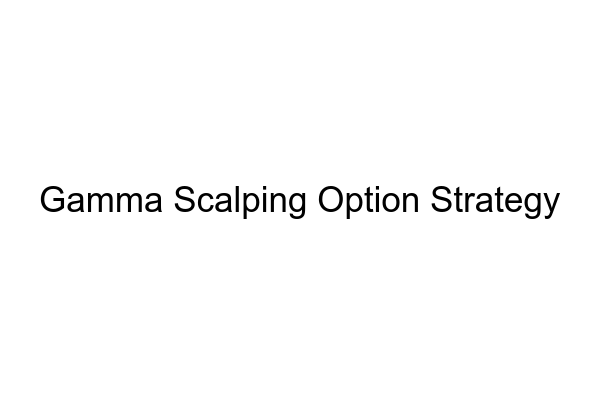Gamma Scalping Option Strategy

What are the characteristics of this option strategy?
Gamma scalping is an advanced strategy that combines options and short-term trading. This strategy involves buying and selling options in rapid succession as the underlying stock price moves. The goal is to profit from the rapid changes in implied volatility that usually follow sharp moves in stock prices, making a profit off the gamma created by the options.
Is this a bullish, bearish or neutral strategy?
Gamma scalping is a neutral strategy, meaning that it is independent of the direction of the market. Rather, it takes advantage of changes in implied volatility based on large moves in the stock price.
Is this a beginner or an advanced option strategy?
Gamma scalping is an advanced option strategy. It is a complex strategy that requires considerable knowledge of options markets, market internals, and the timing of market moves. New traders should be familiar with some of the basics of options trading before attempting this strategy.
In what situation will I use this strategy?
Gamma scalping is most often used in situations when the underlying stock is expected to make a sharp move in either direction. It is often used when market makers expect a large move in the underlying stock, but are not sure which way it will go.
Where does this strategy typically fall in the range of risk-reward and probability of profit?
The goal of gamma scalping is to make small profits from rapid changes in implied volatility. As such, the risk-reward and probability of profit will vary depending on the exact strategy used. Generally speaking, the risk is low and the reward is small, but the probability of success is high.
How is this strategy affected by the greeks?
The greeks will have an effect on the pricing of options when used in this strategy. Delta, theta, vega and gamma will all impact the profitability of the strategy. Therefore, it is important to have an understanding of the greeks before implementing this strategy.
In what volatility regime (i.e VIX level) would this strategy be optimal?
This strategy is most effective when volatility is high. The strategy does not require extremely high volatility, but it is usually most profitable when volatility is greater than 20.
How do I adjust this strategy when the trade goes against me? And how easy or difficult is this strategy to adjust?
Adjustments will depend on the exact strategy being implemented. Generally, adjustments are made by rolling out the current position and taking an opposing position on a different strike price. This strategy can be difficult to adjust, as adjustments must be made quickly in order to take advantage of the fast-moving markets.
Where does this strategy typically fall in the range of commissions and fees?
Gamma scalping requires frequent trading, so commissions and fees can quickly add up. It is important to consider what types of accounts you have access to and the associated fees before committing to this strategy.
Is this a good option income strategy?
This strategy can be an effective way to generate income from options trading. However, there is no guarantee of profit and losses can occur. Therefore, it is important to understand the risks involved before attempting this strategy.
How do I know when to exit this strategy?
As with any trading strategy, timing the exit is essential for success. Exits should be based on the underlying stock price, volatility levels, and the trader’s objectives.
How will market makers respond to this trade being opened?
Market makers generally do not care if this strategy is used or not. They will not be able to predict the direction of the underlying stock, as the strategy is market neutral.
What is an example (with calculations) of this strategy?
Here’s an example of gamma scalping using the stock MSFT, which is trading at $285:
Assuming that we expect MSFT to have a large move in the near future, we could use gamma scalping to profit from this movement. In this case, we could set up the following trade:
Buy 1 MSFT call option with a strike price of $285 for a premium of $10.00
Buy 1 MSFT put option with a strike price of $285 for a premium of $10.00
The total cost of this trade is $20.00, which is the maximum potential loss for the strategy. However, if MSFT has a large move, either the call or the put option will gain value due to the change in implied volatility. We can then sell the option that is gaining value, locking in a profit.
For example, if MSFT’s price rises to $295, the call option will gain value while the put option will lose value. We could then sell the call option for a profit, while still holding the put option. Alternatively, if MSFT’s price falls to $275, the put option will gain value while the call option will lose value. We could then sell the put option for a profit, while still holding the call option.
MarketXLS and how it can help
MarketXLS is a powerful tool that makes analyzing and trading options a breeze. With MarketXLS, you can easily calculate option greeks, such as delta, gamma, theta, and vega, as well as monitor real-time option prices. MarketXLS also gives traders access to real-time news and research, so they can make informed decisions quickly. With the help of MarketXLS, traders can take advantage of gamma scalping quickly and easily.
Here are some templates that you can use to create your own models
Search for all Templates here: https://marketxls.com/templates/
Relevant blogs that you can read to learn more about the topic
